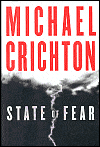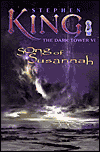...am I the only one who hears the screams, and the strangled cries...
Summerfest v.38...a Milwaukee tradition goes corporate...
So I went to Summerfest on Sunday to see Carlos Santana in concert. An excellent show with phenomenal musicianship on the part of all performers, regardless of what the Journal-Sentinel reporter wrote in the attached review (see way down). I would be chagrin if I did not point out that there was a trumpet player in addition to the trombonist mentioned.
Overall, Summerfest is going the way of the corporate sponsor. Unfortunately this year seemed to be the tipping point on the sell-out scale. Gone are the days of the people's music festival with buying a $3 pin that got you in to the festival anytime on a weekday and during daytime hours on the weekends. Instead we're left with a $5 card that is only good during certain hours during weekdays, and then for only 1 admission per day.
Summerfest instead is going for the brass ring, with their "Big Wig" program.
Tired of walking blocks and blocks to get to a Summerfest concert? Sick of long lines for the latrine? Ticked about getting stuck in the nether reaches of the Marcus Amphitheater when your favorite act takes the stage?
If you answered yes to all those questions - and you have a fat bank account - Summerfest's "Big Wig Experience" may be just the thing for you. For a cool $3,000, you get first shot at buying two primo tickets to every hot concert in the amphitheater all season.
Founded as a people's music festival in 1968, Summerfest is aggressively marketing its elite seating program this season, making an upfront status-laden appeal to the well-heeled.
What you'll get for shelling out your three grand: Right of first refusal to buy two tickets to every concert in some of the best seats in the house; "snazzy name plaques affixed to your reserved seats;" "swanky parking" privileges in a special lot adjacent to the amphitheater; access to the private Summerfest Clubhouse with free drinks available; and entree to special air-conditioned potties.
The 150 Big Wig seats are all in the center section closest to the stage in the Marcus Amphitheater, except the first 10 rows. Those generally must be open to the general public or are used for special promotions, under terms of contracts with the music groups that are booked, Draeger said.
The Santana review:
JS Online: Santana elegant in simplicity: "How to describe the two hour-plus set played by Santana's 11-piece band? Start with Africa, since the sound is built on drums and percussions. Next, travel to the Iberian peninsula, which gave the world the guitarra, or guitar, which Santana has helped define. Stop in Cuba for a lesson in arrangements, head to Haight-Ashbury, where Santana first made a splash in the U.S., and come to rest in Mexico, whose unique culture gives us Spanglish.
Each player in the Santana juggernaut acquitted himself with fire and balance: the main counterweight to Santana's crushing hooks were vocalist Andy Vargas, bassist Benny Rietveld and trombonist Jeff Cressman.
Not to pick apart the indefinable - Santana's style - but two traits are often overlooked by fans and critics. Santana utilizes a right-hand picking technique that reflects his early violin playing and owes a debt to mandolinists' smooth flutter-picking. And by varying the speed of his vibrato, the way his fingers caress the strings, Santana can hang on a single (ear-splitting) note for what seems like hours. Yet a listener aches for more.
Amid sonic thunder and lightning, self-empowerment was the message.
'Be yourself, you're someone special,' Santana said. He paid homage to women who have illuminated him. 'I have a mother, four sisters, a wife and two daughters,' he said. Quoting Maya Angelou, invoking saints and spirits from across the globe, Santana speechified on spirituality and compassion. At one point he even read the names of about 40 sound and lighting support technicians."







